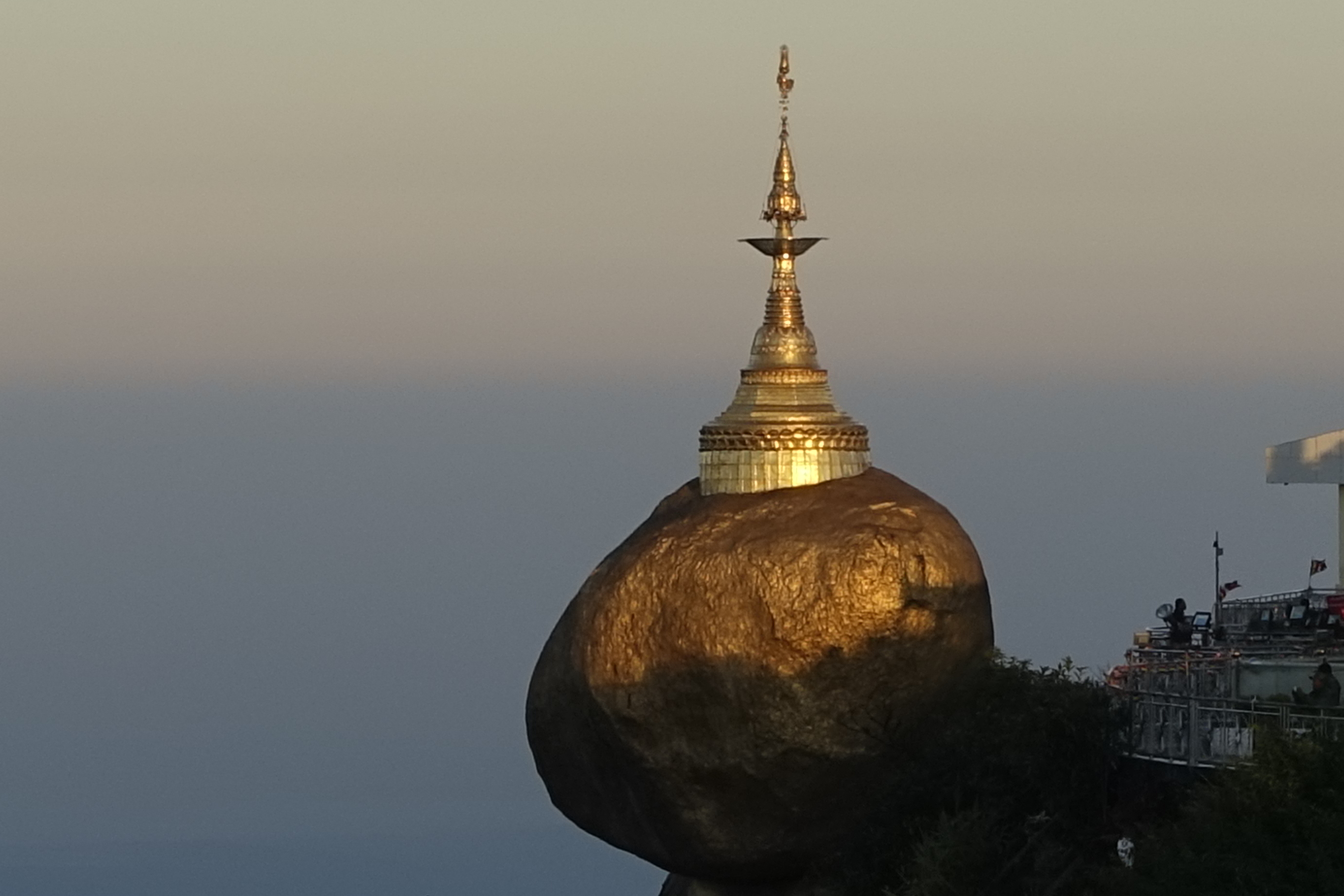Hpa An: Guess what’s in this cave
On the road to Hpa An, something smashed into the side of our bus, damaging the window enough that the crew — there seemed to be five or six people involved in running the bus — determined that we could go no further. We were stuck in a small bus station about 50 kilometers from our goal, and no one spoke enough English to let us know what was happening. We saw the bus crew wander off down an alleyway and then reappear. We saw them make many phone calls. We saw them get into a car, then get out of the car. For a while one of the drivers amused himself by opening and closing the bus door with a remote control.
I had made plans to meet Myoungsun for dinner in Hpa An — she’d gotten there a day ahead of me and was leaving that night. Our bus was supposed to arrive by three, but it was now getting on towards four, and any attempt to find out when we might be going — pointing at my watch and shrugging, for example — just led to smiles and nodding. I’d gotten to talking with an older Dutch woman who’d come outside to smoke, and eventually we decided to share a taxi, if we could find one. Somehow she negotiated our way into the back of a truck, and we rode that way into Hpa An, enjoying an open view of the mountains shrouded in mist. Later on, as I went to meet Myoungsun, I saw our bus pulling into town. The driver waved and grinned.
Hpa An itself is a shoddy little town, but you go there for the sights in the surrounding countryside, and you see those sights by booking a tuktuk tour with Soe Brothers Guesthouse. And if it happens to be cold and rainy on your one day in Hpa An? You go anyway. The sights consist mostly of caves full of Buddhas — the same limestone karst formations that created Batu Caves in Kuala Lumpur — and they’re pretty cool, but by the time we’d passed through the largest of them, waited for the driving rain to ease, ridden on rowboats through yet another cave, and hiked back to the tuktuk on muddy, shoe-sucking trails and the rain picked up again, we were all ready for the day to be over. But, of course, there was one more cave. Guess who we found inside?
There comes a point with any sort of sightseeing where you’ve hit your limit. I met a guy once who’d traveled across Africa, south to north, and he told me he got to the point where he was, like, “Oh, good. Another fucking giraffe.” I’ve hit that point with maharajah’s palaces in Rajasthan, with Buddhist temples in Thailand, and in Hpa An we all hit it with Buddhas in caves. In fact, I was nearing my limit with Myanmar as a whole, with the exhausting pace I’d set myself, with the mediocre hotels and mediocre food, with the uncomfortable transport, with the sights that were supposed to blow me away but kind of didn’t. I even kind of wished I didn’t have to go on the next day to the Golden Rock. But I’d already booked a pricey hotel room up on the mountain close to the rock, and I’d made plans to travel with two Japanese women I’d met on my Hpa An tour, and really, what else was I going to do?
Kyaiktiyo: Golden Myanmar
There is no easy way to get to Kyaiktiyo. No matter how you get to the town below — we went by bus, then by truck taxi — you have to ride up to the pagoda, perched on a mountain, in the back of a giant open truck tall enough that you have to climb a platform to get in and out. The ascent is vertiginous, and it involves multiple long stops to listen to Buddhist pleas for money. You get dropped off in the middle of a temple bazaar, where porters hound you for the opportunity to put your luggage in a basket and carry it to your hotel for you.
But the moment I stepped out onto the balcony of my hotel room and took in the vast panorama of mountains and the plain below and the Golden Rock itself in the distance, I was giddy.
As with similar sights — the Taj Mahal, the Statue of Liberty, the Eiffel Tower — it seems smaller at first than you’re expecting. But then the wonder emerges. Crowds of devotees light fires of candles and incense, they kneel and pray, they take selfies, they apply bits of gold leaf to the rock. For all that Kyaiktiyo is a tourist destination for foreigners, the overwhelming majority of visitors are Burmese pilgrims. They take selfies too, but they’re there for the spiritual power of the place, which they recharge through their devotion.
At our first approach, the rock was shrouded in mist, but that soon lifted, giving us a clear view in the shifting light of the sunset. I came back again alone to see it at night, all lit up, and then we returned in the morning, before dawn, to see the breakfast offerings and warm our chilled feet by the offering fires and catch pilgrims waking up from a cold night spent on the tiles of the temple grounds, open to the elements.
At last the sun crested the peaks behind, and the rock caught fire, gleaming in the first light. Here at last I felt like I’d found the magical Burma I had heard so much about. Here, even more than in the long-dead temples of Bagan, I felt the presence of something unique. I lingered through the morning with the monument and its surrounding temple site, and then it was time to go.

